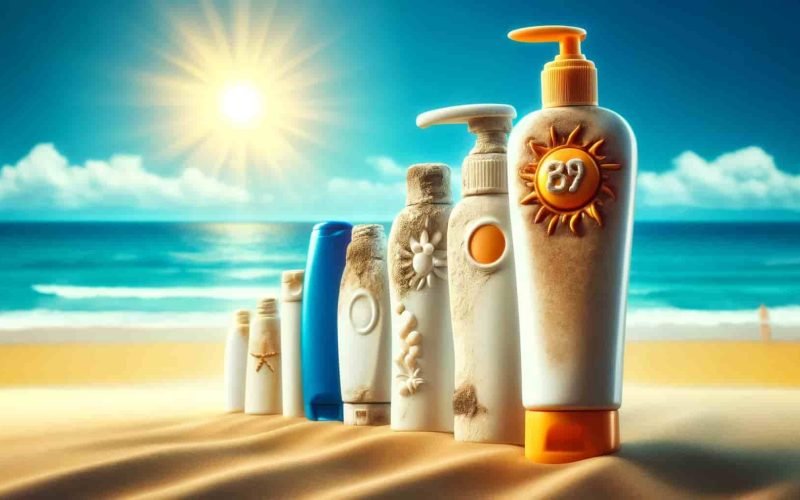Sunscreen is often seen as a summer staple, a shield against the sun’s harmful rays that many assume lasts forever. However, like many skincare products, sunscreens have a definite shelf life beyond which they can become ineffective and potentially harmful. It’s crucial to dispel the myth that sunscreen never expires. Understanding the shelf life of your sun cream is not just a matter of getting your money’s worth—it’s a critical component of skin health.
Exposure to the sun without adequate protection can lead to severe consequences such as sunburn, premature aging, and even skin cancer. Using expired sunscreens can be deceptive because they may look and feel the same but their protective filters may have degraded, leaving the skin vulnerable to UV radiation. Moreover, expired products might contain breakdown products that can irritate the skin or cause allergic reactions, undermining skin health rather than protecting it.
What Determines Sun Cream Shelf Life?
Discuss the factors that impact the efficacy and shelf life of sunscreens, including:
- Formulation: Differences between chemical and physical sunscreens and how their ingredients might degrade over time.
- Packaging: How packaging can affect the stability and longevity of the product.
- Storage conditions: The role of temperature, light, and air exposure in accelerating degradation.
The Science Behind Sunscreen Expiration
Understanding why sunscreens expire involves a closer look at the stability and integrity of their active ingredients. Here’s a detailed exploration:
- Degradation of Active Ingredients: Sunscreen formulas typically include chemicals like avobenzone and oxybenzone, known for their ability to absorb UV rays. Over time, exposure to light, air, and heat can break these molecules down. As a result, not only does the sunscreen’s effectiveness decrease, but there is also a risk that the breakdown products could be harmful if not adequately assessed for safety.
- Reduction in Effectiveness: The primary function of sunscreen is to protect the skin from harmful UV radiation, quantified by its Sun Protection Factor (SPF). With the degradation of active ingredients, the SPF value decreases, meaning the product becomes less effective at blocking UV rays. Consequently, the skin becomes more susceptible to sunburn and long-term damage, such as premature aging and even skin cancer.
- Safety Concerns with Degraded Products: As the protective compounds in sunscreen deteriorate, there’s an increased likelihood of skin irritation or allergic reactions. This is particularly concerning because degraded products may contain new compounds that have not been dermatologically tested. The potential for adverse skin reactions emphasizes the importance of adhering to expiration dates and properly storing sunscreens to maintain their efficacy and safety.
How to Identify Expired Sun Cream
Recognizing when a sunscreen is past its prime is crucial for maintaining effective skin protection. Here are detailed insights on how to identify expired sun cream:
- Check the Expiration Date: First and foremost, always examine the packaging for an expiration date. Sunscreen manufacturers typically include this information as a guideline for optimal usage. By checking the label before application, you can ensure that the product is within its intended shelf life and effective at providing the stated level of UV protection.
- Observe Changes in Texture, Color, or Smell: Over time, sunscreen can undergo noticeable changes that may indicate degradation. If the cream appears discolored, has developed an unusual odor, or the texture has changed (either becoming grittier or unusually watery), it’s a clear sign that the product may no longer perform effectively. These changes can result from the breakdown of chemical compounds, potentially reducing the sunscreen’s ability to shield your skin from UV rays.
- Look for Separation: Another significant indicator of sunscreen expiration is separation. If you notice that the product has separated into liquids and solids, or if there is oil pooling at the top of the cream, it suggests that the emulsion has broken down. This separation affects the even distribution of the sunscreen’s active ingredients when applied to the skin, leading to patchy protection and increased risk of sunburn.
Best Practices for Sun Cream Usage and Storage
Offer advice on how to extend the shelf life of sunscreen and ensure maximum efficacy:
- Proper storage: Recommendations on keeping sun cream away from extreme temperatures and direct sunlight.
- Regular replacement: Emphasizing the importance of replacing sunscreen every season for optimal protection.
- Application tips: How to apply sunscreen correctly to maximize its protective benefits.
The Risks of Using Expired Sunscreen
Utilizing expired sunscreen poses significant risks that go beyond mere ineffectiveness. When sunscreen components break down due to expiration, the level of UV protection promised on the label decreases substantially. Consequently, this reduced efficacy can lead to insufficient protection against the sun’s harmful rays. The direct result often includes increased susceptibility to sunburns, which not only cause immediate discomfort but also elevate the long-term risk of developing skin cancer. Moreover, the compromised integrity of expired sunscreen can accelerate the aging process of the skin, leading to premature wrinkles and sunspots. These outcomes highlight the critical nature of using sunscreens within their effective lifespan to ensure comprehensive protection.
Conclusion
In conclusion, understanding and respecting the shelf life of sunscreen is paramount in maintaining its effectiveness. Regularly checking expiration dates, noting any changes in the product’s consistency, and properly storing sunscreen can all help preserve its protective qualities. By staying informed and vigilant about the condition of your sun care products, you can safeguard your skin against the potent effects of UV radiation. Always remember that effective sun protection is a key component of skin health and overall wellness. As such, being proactive and attentive to your sun cream shelf life is not just advisable—it’s essential for anyone looking to enjoy the sun safely.





